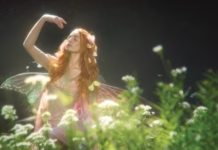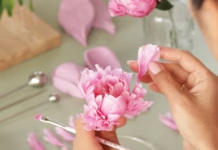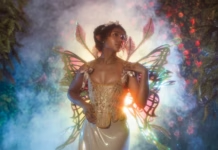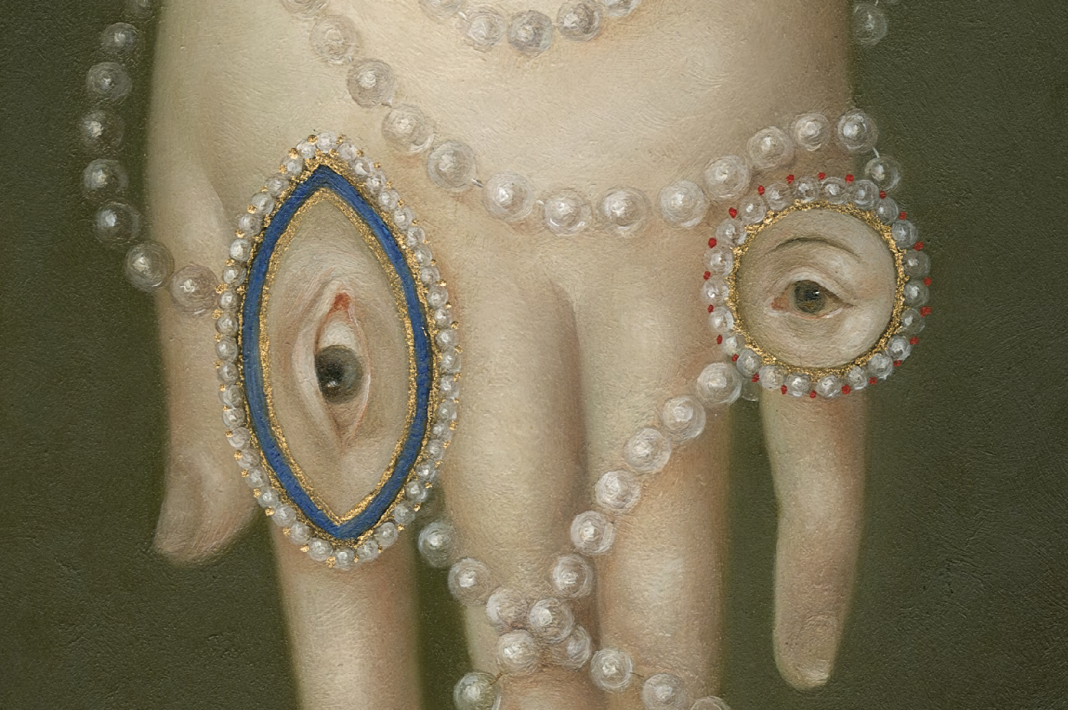For the Outlander television series, costume designer Terry Dresbach created an ensemble for Geillis Duncan that included a brooch containing Bonnie Prince Charlie’s eye as a secret sign of her political allegiance to the Jacobite cause. As Dresbach explains it, “Geillis traveled back in time to help Prince Charlie in his bid for the throne, an act of extraordinary commitment. A kind of patriotic love.”

7×5 inches, oil on panel
© Fatima Ronquillo, 2017
Dresbach says she’s long been obsessed with lover’s eye jewelry, a fad that started in the late 1700s when nobles would signal their untoward passion for a secret lover by wearing their eye in ornamental fashion. “Lover’s eye jewelry is quite remarkable,” Dresbach says. “It seemed appropriate that Geillis would choose to wear a piece with the eye of her beloved. We made it oversized, because being a time traveler, Geillis can break the norms, and because we wanted it to be seen by viewers as a clue.”
What a gorgeous way to be subversive—and ultra stylish! These miniatures were normally watercolors on ivory, framed in some gem-laden manner, and worn as brooches, bracelets, necklaces, or rings.

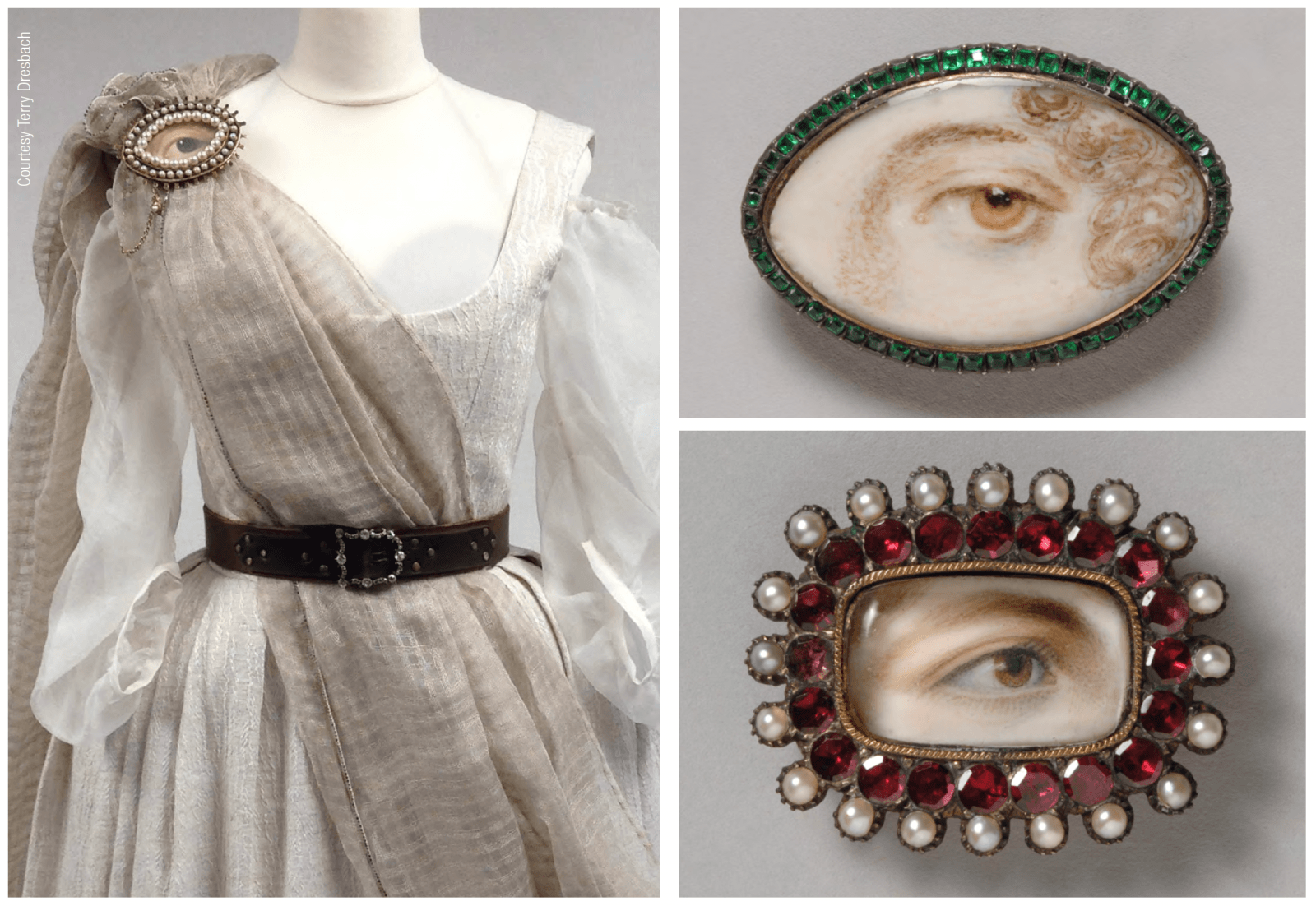
It was the Prince of Wales, or the future George IV (1762–1830), who most popularized the trend after falling—illegally—for the Catholic Maria Fitzherbert, whom he wooed in part by commissioning British miniaturist Richard Cosway to paint a portrait of his eye and sending it to her in the post. We’re sure this was not creepy at all. She responded with portraits of her own eyes, and a wedding soon followed—how could it not? Shockingly, it did not last. Still, the trend took fire, and eyeballs galore sparkled from the wrists and fingers of any number of lovelorn gentlefolk until well into the 1830s.
Article from the Outlander Issue #44 Autumn 2018 Subscribe



